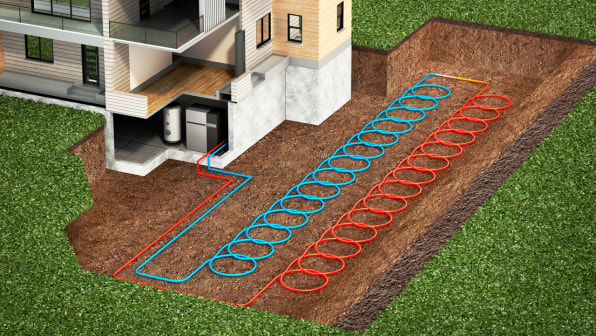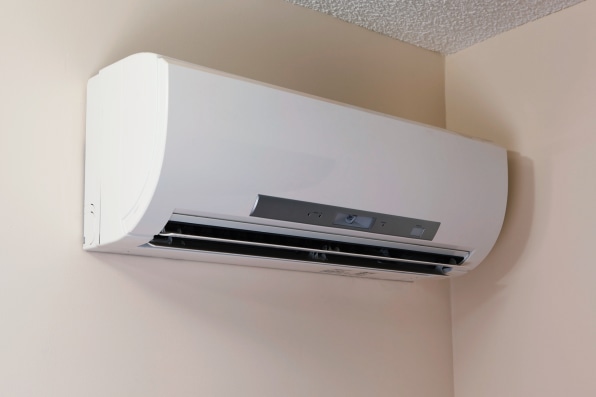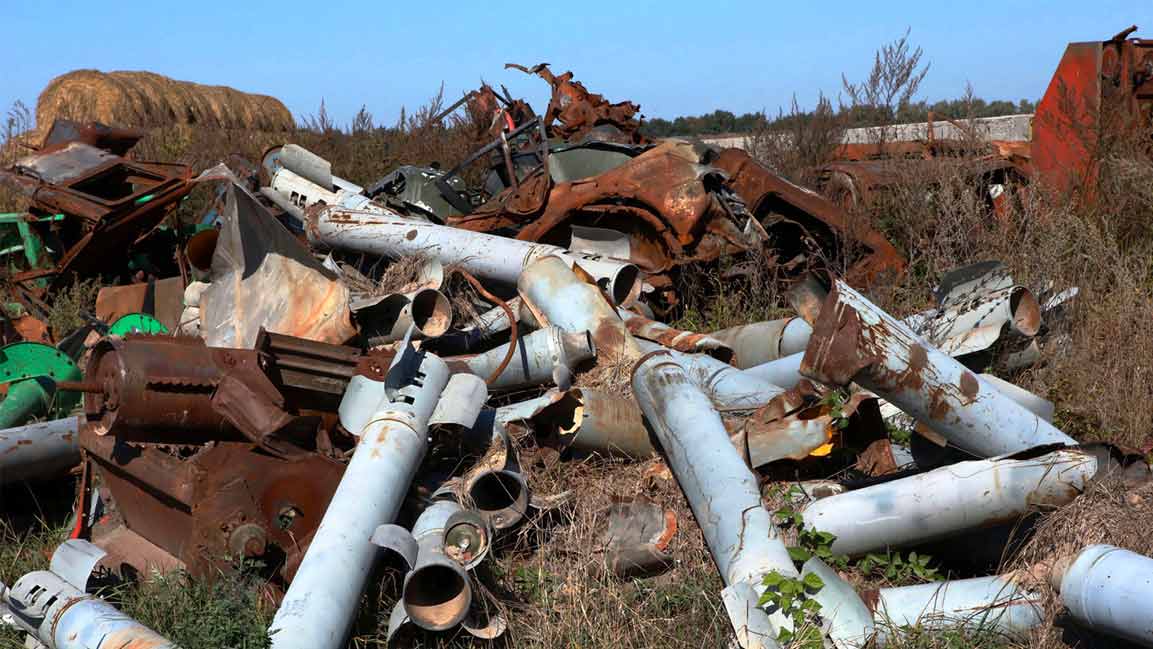- | 10:00 am
Heat pumps have become a buzzword. So, how exactly do they work?
As a tool in a larger strategy to electrify everything in our homes, heat pumps are a key part of fighting climate change.

Last year, heat pumps outsold gas furnaces in the U.S. for the first time. As a tool in a strategy to electrify everything in our homes—from cars to stoves to hot water heaters—they’re a key part of fighting climate change. New government incentives are making them cheaper to buy. But many people still haven’t used one yet. To learn more about how they work, we turned to Rewiring America (a nonprofit so obsessed with the technology that it sent a character called “Mr. Heat Pump” to lobby in Washington, D.C. last year) and Redwood Energy, a company that specializes in zero net energy buildings.
HOW DOES A HEAT PUMP WORK?
Heat pumps move heat from one place to another using refrigerants. An air conditioner is one form of a heat pump (it makes rooms cooler by extracting heat and moving it outside). But when most people talk about heat pumps, they’re talking about devices that are designed to work in both directions and can either cool or heat your home.
In the winter, the devices pump heat from the outside air into your home. That’s possible even when it’s very cold because there’s still enough energy in the outside air. “Below zero Fahrenheit, there’s still plenty of heat in the air to be able to extract it and pump it into your house,” says Joel Rosenberg, senior manager of special projects at Rewiring America. As the organization’s Go Electric guide puts it: “That might seem a bit counterintuitive. After all, how can something move heat from the outside air when it’s 20 degrees outside? But heat is just energy, and there’s energy in the air all the way down to absolute zero, which is -465°F.”

DO THEY WORK IN VERY COLD CLIMATES?
Yes. Earlier versions of the devices didn’t work as well at low temperatures, so they were most common in Southern states where it doesn’t get as cold in the winter. But advances in the technology have changed that. Multiple things improved, but the biggest change was the addition of computers that help the heat pump smoothly adjust as the temperature outside drops. “Adding computers has finally allowed heat pumps to work at very cold temperatures, from 40 degrees Fahrenheit down to -30 degrees Fahrenheit, so they no longer switch to inefficient, expensive electric resistance heaters at 40 degrees,” says Sean Armstrong, managing principal of Redwood Energy. “Instead, the heat pump switches gears, spinning the fan faster to collect more heat and pumping the refrigerant faster into the house, and working down to -30 degrees Fahrenheit.” Heat pumps are now widely used in places like Maine, despite pushback from the fossil industry.

WHAT OPTIONS ARE AVAILABLE?
The tech comes in a few different forms. Geothermal or ground-source heat pumps make use of the steady temperature underground, with water flowing through pipes that absorbs heat and then moves it to or from your house. It’s efficient, but expensive to install. Many homeowners use “air-source” heat pumps instead. If you have forced air heat and central air conditioning, you may want to install a central heat pump that connects to your existing ducts; outside, it looks like a central air conditioner. The system can also connect to radiant floor heating.
In other cases, people use ductless “mini-split” heat pumps that are often installed high on walls. (If you don’t like how they look, there are various ways to hide them.) The right option will depend on your home and climate. “You should get quotes from at least three different contractors, and you should ask each contractor for multiple equipment options,” says Rosenberg.

WHAT HAPPENS IF THE POWER GOES OUT?
A common concern is that a heat pump will be less reliable than a gas furnace if the electricity goes out in a storm. But gas furnaces typically also need electricity to operate. Ideally, you’d want backup power through solar panels and battery storage. Rosenberg says it will become increasingly common for electric cars to double as battery storage for power outages, so you may not need to invest in a separate battery.
HOW WILL A HEAT PUMP CHANGE YOUR UTILITY BILLS?
For most people, total utility bills will go down even though your electricity bill will rise, Rosenberg says. The savings can be especially big for people who currently use fuel oil. When people install heat pumps, they often get new insulation at the same time, which can also dramatically save energy. That also means that you can install a smaller heat pump system. (It’s worth noting that heat pumps can be used in any size of home, and the system just needs to be designed correctly for your layout.)
HOW CAN YOU FIND A GOOD HEAT PUMP INSTALLATION COMPANY?
Because many HVAC technicians still aren’t familiar with the technology—or may have outdated knowledge about how well the devices work—it’s important to shop around to find a good installer to work with, says Rosenberg. A growing number of home electrification startups are also emerging to help make the process of switching as simple as possible.







































